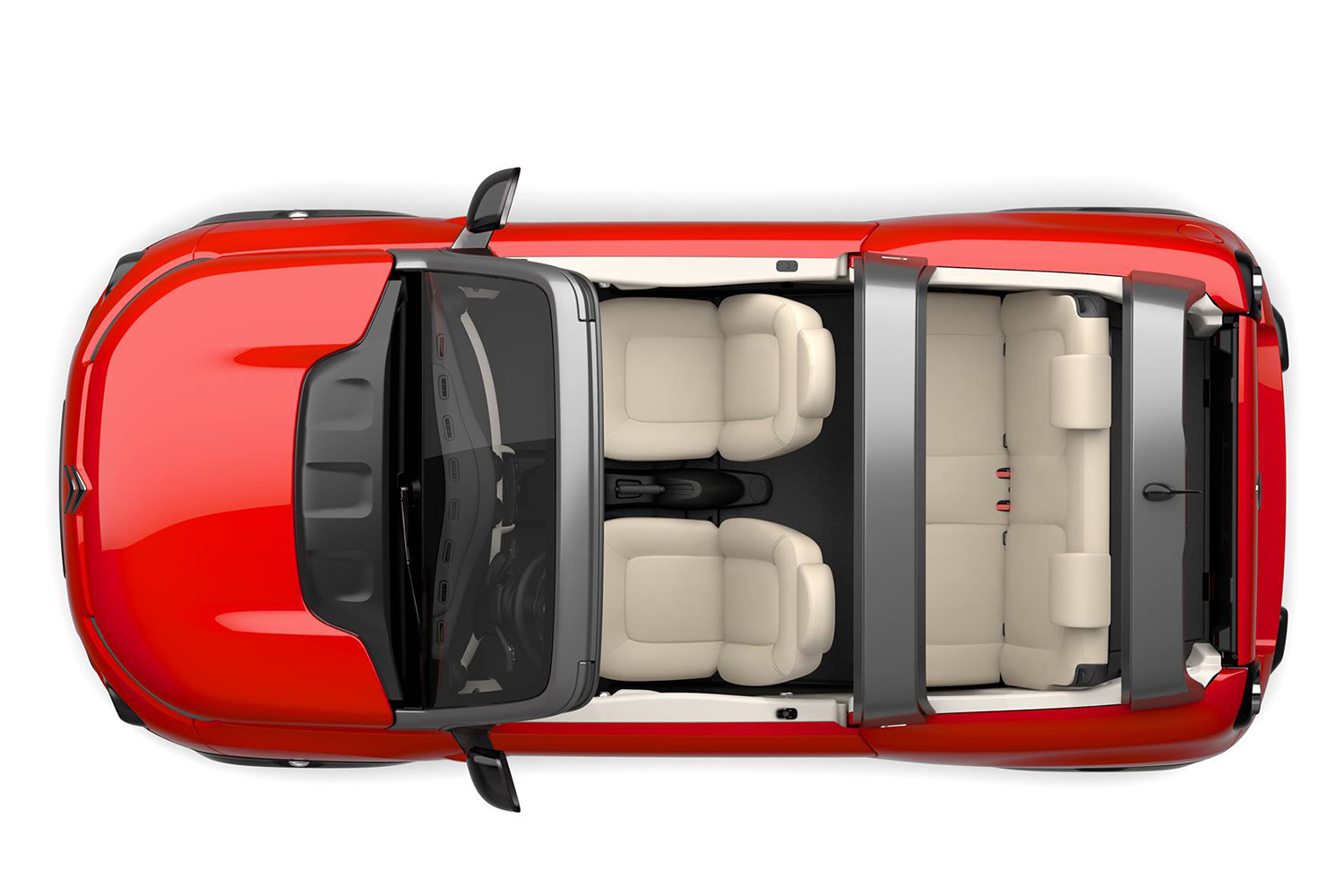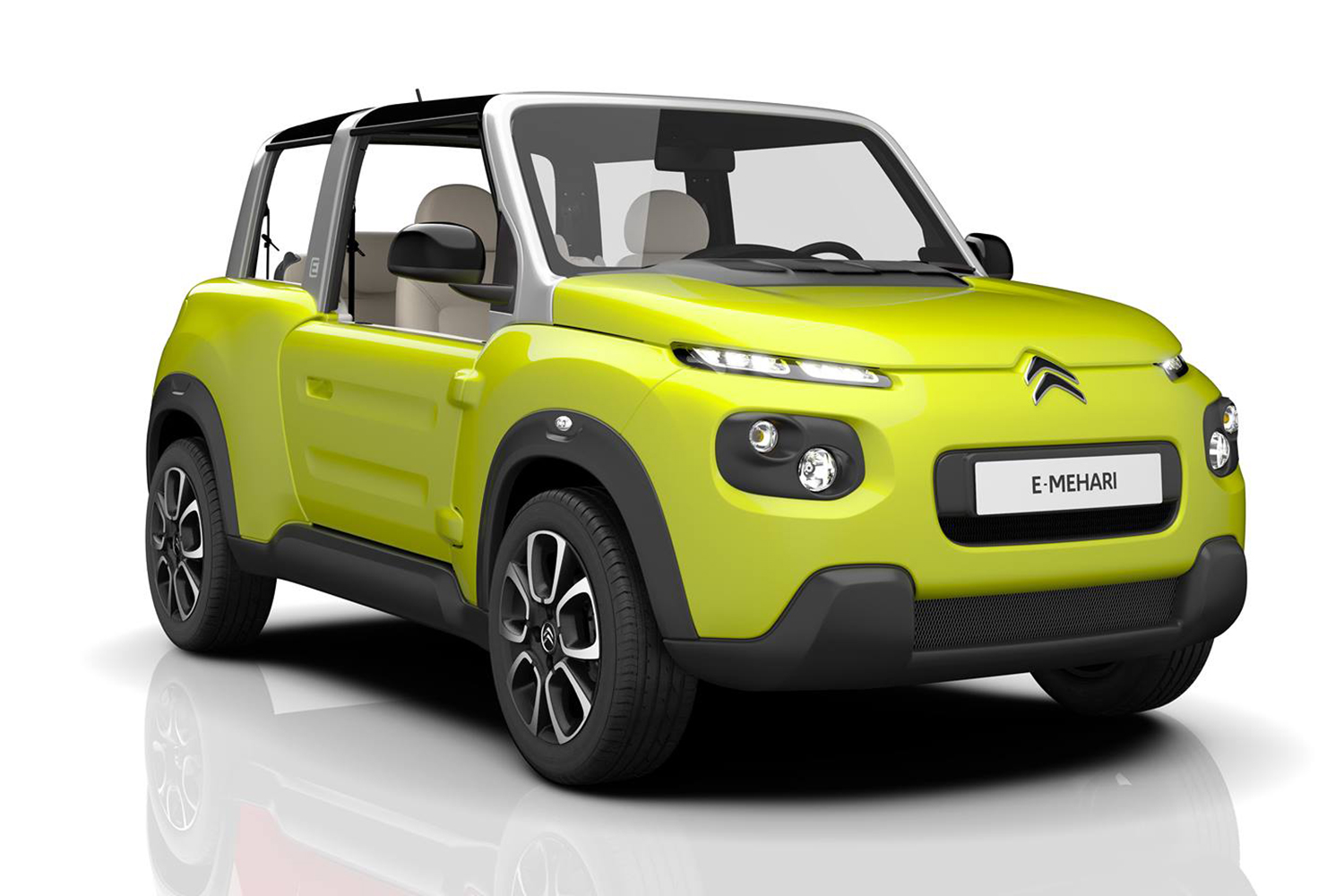Citroën has officially unveiled the E-Mehari, an open-top two-door previewed by the aforementioned concept. Its true roots, however, go much deeper.
The E-Mehari is inspired by the 1968 Mehari, a four-seat cabriolet SUV named after a camel. The off-roading compact was (and is) revered for its funky styling and laid-back charm, so much so that it has become a bona fide cult classic. This new one takes cues from its predecessor with its convertible top, raised chassis, and thermo-formed plastic body, but these are subtle “winks,” as Citroën so cleverly puts it.
Underneath the shell lies a much more modern powertrain than the 602 cc flat-two engine and four-speed gearbox that motivated the old car. The lovable beach cruiser is actually electric this time around, with a 67-horsepower motor being fed by a 30 kW lithium metal polymer battery. Fully charged, the vehicle boasts a top speed of 68 mph and a driving range of 124 miles, which should be plenty for jaunts down the coastline.
As with most Citroëns, there are a variety of unusual color choices, including orange, “invigorating yellow,” and “elegant beige” for the exterior. The roof can also be black or an orange-red depending on the customer’s preference, and the interior — which can be cleaned out with a hose — is available in either beige or an orange-red pattern inspired by water sports.
“Incomparable, silent, and stress-free, the E-Mehari stands apart as a free spirit in the automotive market!” reads Citroën’s enthusiastic press release.
Pricing for the E-Mehari has not been released yet, but the vehicle is expected to touch down in France in spring 2016.





















